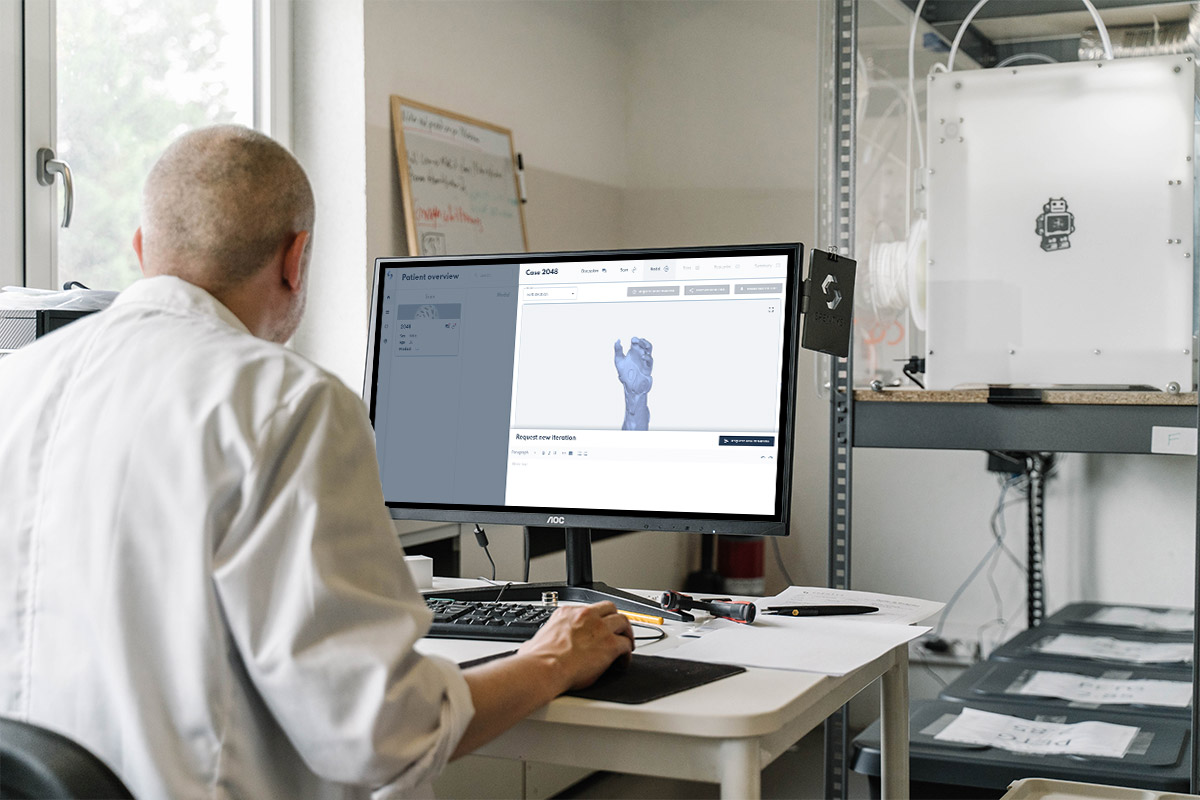You broke your wrist: a guideline before your doctor's appointment
Approximately 1,5% of all visits to the emergency department are due to hand and/or forearm fractures, most of which are radius and/or ulna fractures (44%). The majority (47%) of these hand and/or forearm fractures are caused by accidental falls (1). Since these fractures can happen anywhere (at home, in the street, at school…), it is good to know which measures you can take before you meet with your doctor.

The typical mechanism that causes a distal radius fracture is falling on an outstretched hand with the wrist in extension. Although patients with osteoporosis have an increased risk for fractures after such an accident, healthy, young patients can also break their wrist. This may be the case after a violent injury (2). Symptoms that could indicate a wrist fracture include severe pain, soreness, swelling and bruising. It can be challenging to move the hand or arm and the wrist or arm may be in an odd shape. It is possible to experience tingling or numbness in the limb and sometimes, the bone can even protrude from the skin (3).
If you experience one or more of these symptoms, you should consult a doctor as soon as possible. In the meantime, there are a few things you can do. First of all, you should avoid moving your fractured wrist as much as possible. In the light of the above, you can wear an arm sling to support your wrist. Secondly, you should apply pressure to the wound if it is bleeding. In third place, you can apply an ice pack to the injury. Furthermore, it is best not to eat or drink anything before you get to the hospital, in case you need surgery for the fracture (3). In order to help your doctor make an assessment of what happened, it is essential that you can reconstruct what kind of mechanism caused your injury. Additionally, your doctor will want to know which medication you take. Therefore, it is advisable to bring your medication with you to the hospital.
If a wrist fracture is suspected based on the history and the physical examination, a radiograph of the wrist should be taken to make the definitive diagnosis (2). Once the diagnosis of a broken wrist is confirmed, there are several treatment options. Non-displaced fractures can be treated with a splint or a cast. However, a circumferential cast should never be used in the acute setting because of the risk of additional swelling. Therefore, splinting should be preferred as an immobilisation method whenever there is a risk of additional swelling, which is the case for all fractures less than 2 to 3 days old. If the fracture is displaced, an attempt at closed reduction should be performed. Surgery might also be necessary to realign the bones (2,4,5).

Shortly after the injury, analgesics may be needed to relieve the pain. Swelling can be reduced by elevating the arm, making a fist and then stretching the fingers several times in order to boost the circulation or massaging the hand and forearm. To reduce the stiffness after the cast or splint has been removed, you can do some exercises and stretches. Examples of these exercises include flexion and extension of the elbow, turning your palm up and down, bending and stretching the wrist and circling your hand clockwise and anticlockwise (2,3,6).


You broke your wrist: a guideline before your doctor's appointment

Approximately 1,5% of all visits to the emergency department are due to hand and/or forearm fractures, most of which are radius and/or ulna fractures (44%). The majority (47%) of these hand and/or forearm fractures are caused by accidental falls (1). Since these fractures can happen anywhere (at home, in the street, at school…), it is good to know which measures you can take before you meet with your doctor.

The typical mechanism that causes a distal radius fracture is falling on an outstretched hand with the wrist in extension. Although patients with osteoporosis have an increased risk for fractures after such an accident, healthy, young patients can also break their wrist. This may be the case after a violent injury (2). Symptoms that could indicate a wrist fracture include severe pain, soreness, swelling and bruising. It can be challenging to move the hand or arm and the wrist or arm may be in an odd shape. It is possible to experience tingling or numbness in the limb and sometimes, the bone can even protrude from the skin (3).
If you experience one or more of these symptoms, you should consult a doctor as soon as possible. In the meantime, there are a few things you can do. First of all, you should avoid moving your fractured wrist as much as possible. In the light of the above, you can wear an arm sling to support your wrist. Secondly, you should apply pressure to the wound if it is bleeding. In third place, you can apply an ice pack to the injury. Furthermore, it is best not to eat or drink anything before you get to the hospital, in case you need surgery for the fracture (3). In order to help your doctor make an assessment of what happened, it is essential that you can reconstruct what kind of mechanism caused your injury. Additionally, your doctor will want to know which medication you take. Therefore, it is advisable to bring your medication with you to the hospital.
If a wrist fracture is suspected based on the history and the physical examination, a radiograph of the wrist should be taken to make the definitive diagnosis (2). Once the diagnosis of a broken wrist is confirmed, there are several treatment options. Non-displaced fractures can be treated with a splint or a cast. However, a circumferential cast should never be used in the acute setting because of the risk of additional swelling. Therefore, splinting should be preferred as an immobilisation method whenever there is a risk of additional swelling, which is the case for all fractures less than 2 to 3 days old. If the fracture is displaced, an attempt at closed reduction should be performed. Surgery might also be necessary to realign the bones (2,4,5).

Shortly after the injury, analgesics may be needed to relieve the pain. Swelling can be reduced by elevating the arm, making a fist and then stretching the fingers several times in order to boost the circulation or massaging the hand and forearm. To reduce the stiffness after the cast or splint has been removed, you can do some exercises and stretches. Examples of these exercises include flexion and extension of the elbow, turning your palm up and down, bending and stretching the wrist and circling your hand clockwise and anticlockwise (2,3,6).







_11zon.jpg)

